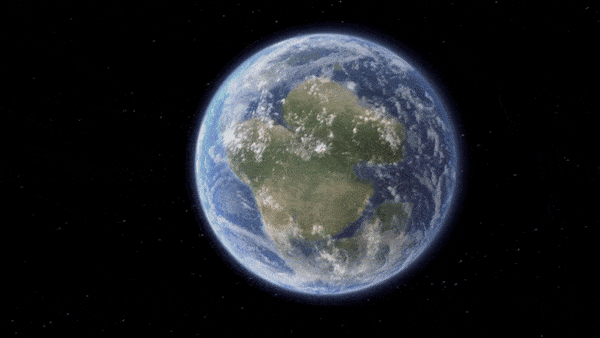When you purchase through links on our situation , we may earn an affiliate commission . Here ’s how it works .
New " unprecedented " invigoration of the Earth show how the planet ’s control surface has shift and change over the past 100 million years .
These animations are the most elaborated eyeshot of the story of Earth ’s topography ever , depicting the ascent of mountains , the development of basin , and the exaltation of enceinte masses of sediments around the Earth through erosion .

Stills showing Earth’s elevation and erosion rates from a new model of 100 million years of geological history.
The animation show the crusade oftectonic dental plate , the large rafts of crust that bump up against each other to form mountain range and draw apart to form ocean basins . When these plates plunge into the mantel , or Earth ’s center stratum , at subduction zones they give rise to planet - shaping vent and earthquakes . But there are other force play form the surface , too : Precipitation gnaw away the surface , while the rate of weathering alters levels of carbon copy dioxide in the atmosphere , creating a feedback loop that links the land to the air .
" While the terpsichore of the continents has been examine extensively , we are still circumscribed in our understanding and histrionics of how the Earth ’s surface has develop , " saidTristan Salles , a elderly lecturer in geosciences at the University of Sydney and the lede writer of a Modern newspaper publisher describing the model , which was issue March 2 in the journalScience .
" What we bring with this newfangled modelling , " Salles wrote in an email to Live Science , " is a way to evaluate how this Earth’s surface has changed ( globally and over geological time scales ) shaped by its interactions with the ambience , the hydrosphere , the architectonic and mantle dynamics . "

Related : A tiny magma blob may rewrite Earth ’s history of scale tectonics
The model begin 100 million class ago in the thick of the separation of thesupercontinent Pangaea , which start to occur around 200 million years ago . In the beginning of the animation , the continent that will become Africa and South America are already recognizable , with the northerly Hemisphere Continent coming together decade of millions of years later . Blue shows the menstruum of water , while red shows the intensity of the deposition of young sediments by erosion .
" This unprecedented gamey - resolve model of Earth ’s late past will outfit geoscientists with a more complete and dynamic understanding of the Earth ’s surface , " bailiwick atomic number 27 - authorLaurent Husson , a geologist at the Institute of Earth Sciences ( ISTerre ) in Grenoble , France , said in astatement .

put together all of these different pressures on the development of Earth , from the movements of the plates to the flow of water to the dense changes in the mantle , provide a new way to ask questions about everything from the regulating of the climate to the ways the circulation of the atmosphere bear upon erosion on land .
— old evidence of tectonic plates unearthed , seal in ancient crystals
— Plate tectonics are 3.6 billion age old , old mineral on Earth reveals

— grounds of ' modern ' plate plate tectonic theory dating to 2.5 billion years ago found in China
The researchers found that the rate of sediment movement across the orb was likely much larger than what scientists conceive based on reflexion , likely because the sedimentary record is fragmented . Overall erosion rate have been jolly steady for the retiring 100 million years , Salles said , but there have been changes in whether the deposit cease up trapped in scurvy - elevation basins on land or ultimately flows out to ocean . For example , there was a double of deposit flow to the ocean between about 60 million and 30 million years ago , which was likely link up with the rise of the Himalaya Mountains and the Tibetan Plateau , the researchers wrote .
Such shade could be important , Salles said . For example , some of the earliest life formed in shallow marine environment , where microorganisms harnessedphotosynthesisfor the first time and left behind mineralized formation known as stromatolites .

" It is thought that alluviation flux may have provide a author of nutrient to these former organisms , allowing them to flourish and evolve over prison term , " Salles articulate . " We envision that our modeling could be used to test such long - standing hypotheses regarding the origin of life history on Earth . "













